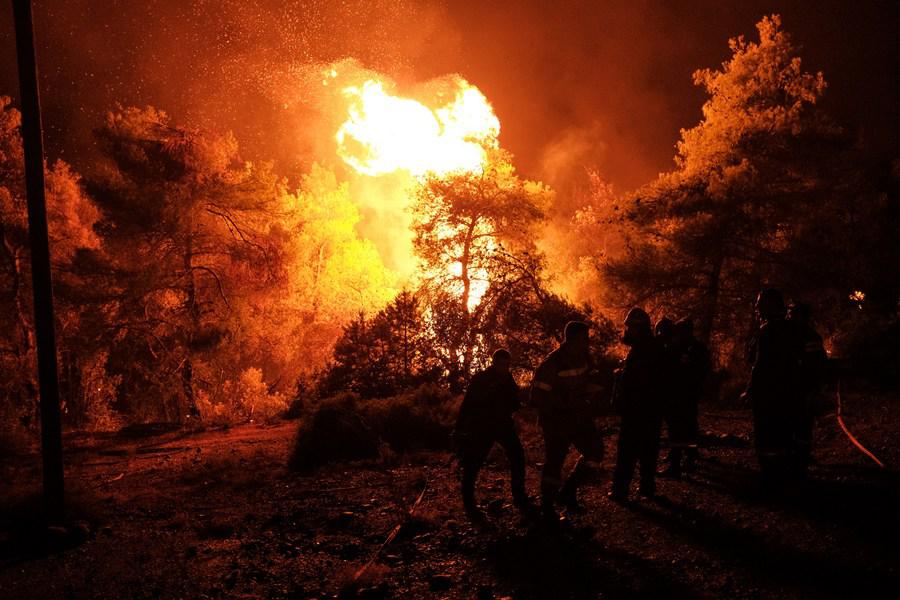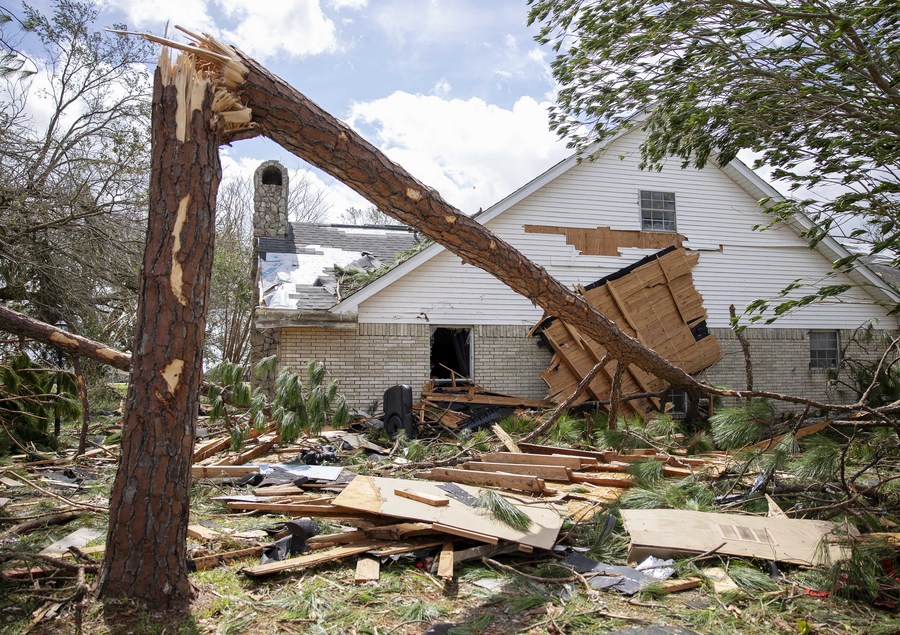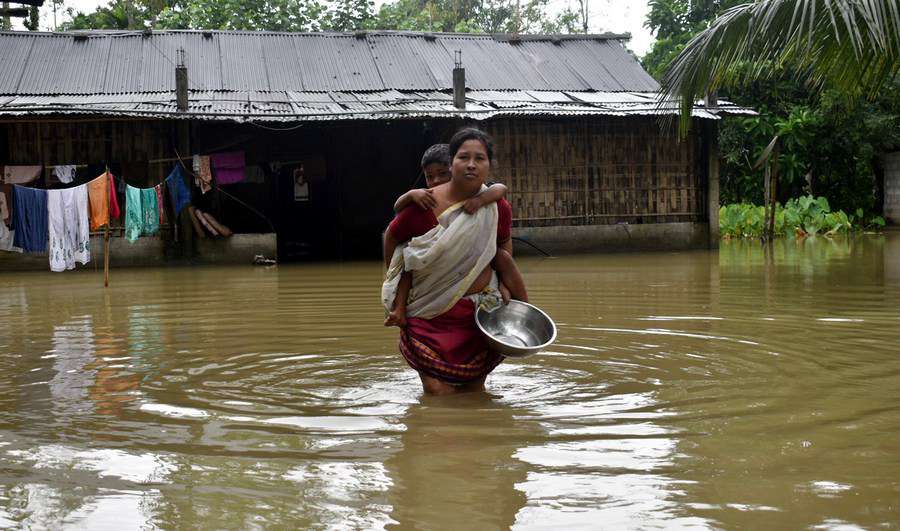Weather disasters increase five-fold in 50 years: WMO report

Fire fighters battle a blaze raging near Makrymalli village on Evia island, Greece, on Aug. 13, 2019. (Photo by Nick Paleologos/Xinhua)
From 1970 to 2019, weather, climate and water hazards accounted for 50 percent of all disasters, 74 percent of all reported economic losses, and 45 percent of all reported deaths, a latest WMO report said.
More than 91 percent of these deaths occurred in developing countries.
GENEVA, Sept. 1 (Xinhua) -- The number of weather-related disasters has increased by five times over the past 50 years, the latest report by the World Meteorological Organization (WMO) said on Wednesday.
However, thanks to improved early warning systems and disaster management, the number of deaths from these hazards has been almost three times less.
According to the WMO Atlas of Mortality and Economic Losses from Weather, Climate and Water Extremes (1970 - 2019), there were more than 11,000 reported disasters globally, with over two million deaths and 3.64 trillion U.S. dollars in losses.
From 1970 to 2019, weather, climate and water hazards accounted for 50 percent of all disasters, 74 percent of all reported economic losses, and 45 percent of all reported deaths, the report says. More than 91 percent of these deaths occurred in developing countries.
Among the top 10 hazards that led to the largest loss of human life during this period were droughts, storms, floods and extreme temperatures. However, the death toll fell from over 50 000 in the 1970s to less than 20 000 in the 2010s.
In terms of economic losses, three of the 10 costliest disasters occurred in 2017, including Hurricanes Harvey, Maria and Irma. These three hurricanes alone accounted for 35 percent of total economic losses from the top 10 disasters globally from 1970 to 2019.
"Weather, climate and water extremes are increasing and will become more frequent and severe in many parts of the world as a result of climate change," says WMO Secretary-General Petteri Taalas.

A tree is seen snapped off by Hurricane Ida in Houma, Louisiana, the United States, Aug. 30, 2021. (Photo by Nick Wagner/Xinhua)
"That means more heatwaves, drought and forest fires such as those we have observed recently in Europe and North America. We have more water vapor in the atmosphere, which is exacerbating extreme rainfall and deadly flooding. The warming of the oceans has affected the frequency and area of existence of the most intense tropical storms."
"Economic losses are mounting as exposure increases. But behind the stark statistics lies a message of hope. Improved multi-hazard early warning systems have led to a significant reduction in mortality. Quite simply, we are better than ever before at saving lives," Taalas said.
The WMO report called for disaster risk financing mechanisms to be reinforced at national and international levels, especially for Least Developed Countries and Small Island Developing States and Territories, while developing integrated and proactive policies on slow-onset disasters such as drought.

A woman carrying a child wades in flood water caused by heavy rain and overflowing of river at Dhemaji district of India's northeastern state of Assam, on Aug. 28, 2021. (Str/Xinhua)
Photos
 Dance show saluting traditional culture of the Song Dynasty makes its debut
Dance show saluting traditional culture of the Song Dynasty makes its debut Village in SW China’s Yunnan embraces prosperity through agricultural tourism
Village in SW China’s Yunnan embraces prosperity through agricultural tourism Eighth birthday for pair of giant pandas celebrated in Haikou, Hainan province
Eighth birthday for pair of giant pandas celebrated in Haikou, Hainan province Olympic gold medalists portrayed in Shanxi artist’s polymer clay sculptures
Olympic gold medalists portrayed in Shanxi artist’s polymer clay sculptures
Related Stories
- Chinese youth launch projects tackling climate change with innovation
- Europe battles devastating summer wildfires amid intensifying climate change
- China boosts efforts to hit green targets
- Urgent global action needed to stop drastic climate change trend: IPCC report author
- Climate changes to increase in all regions in coming decades: IPCC report
Copyright © 2021 People's Daily Online. All Rights Reserved.






